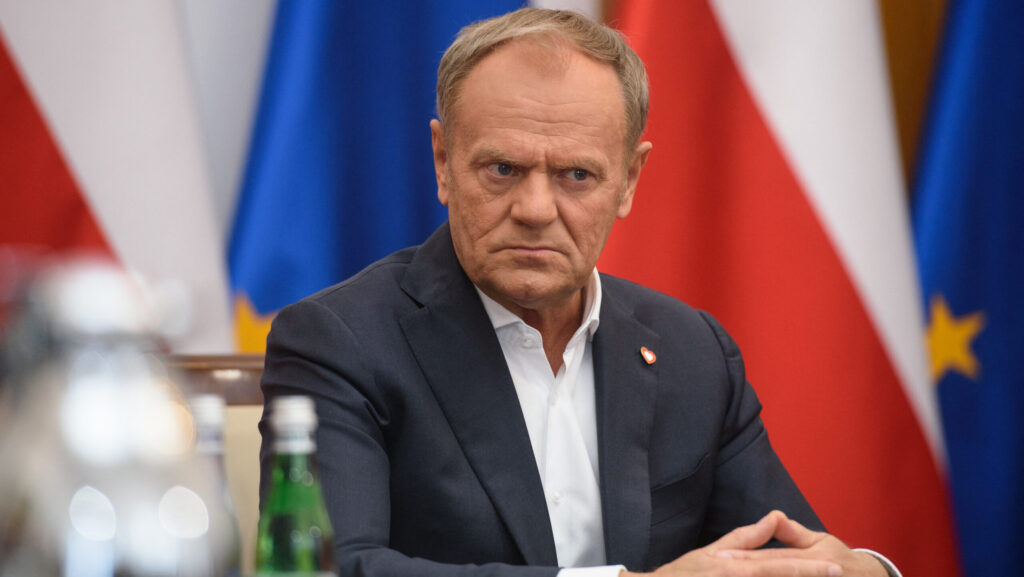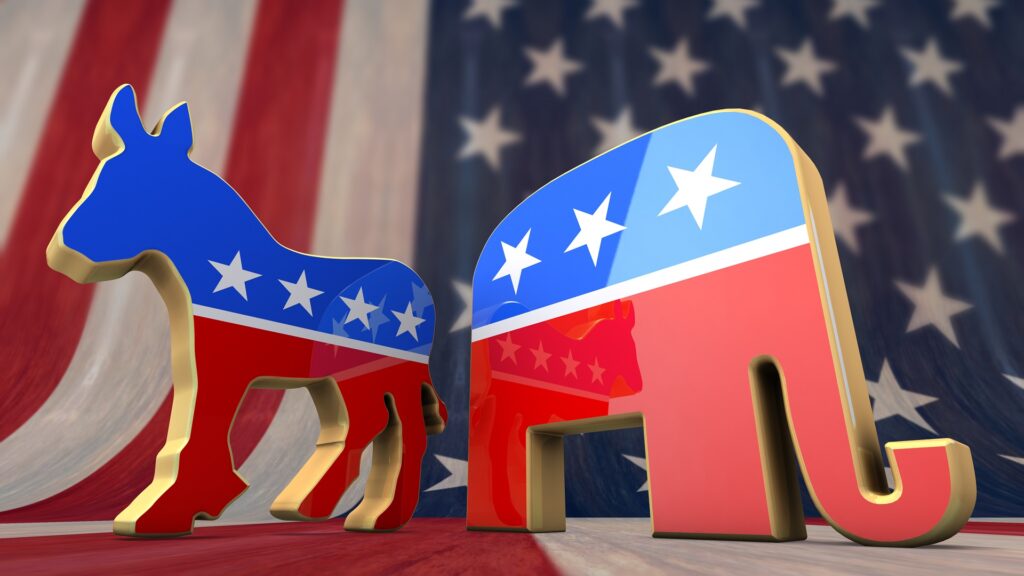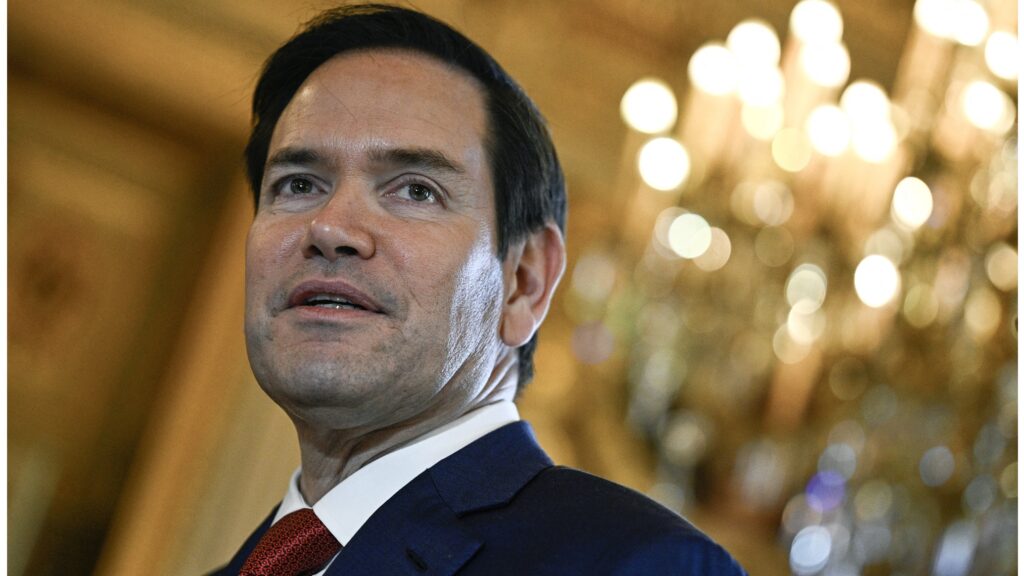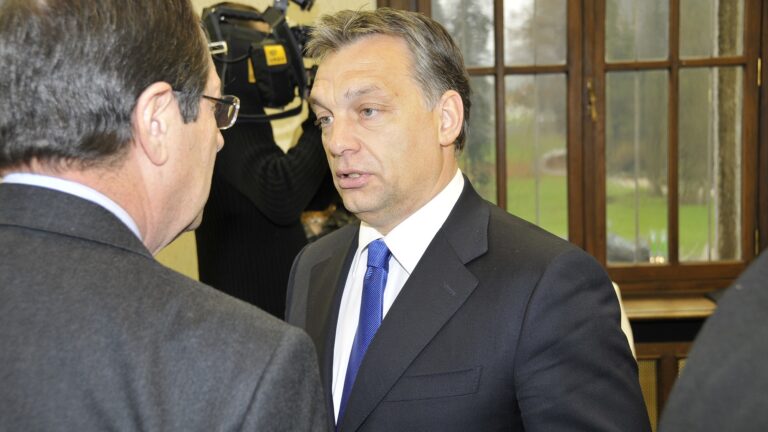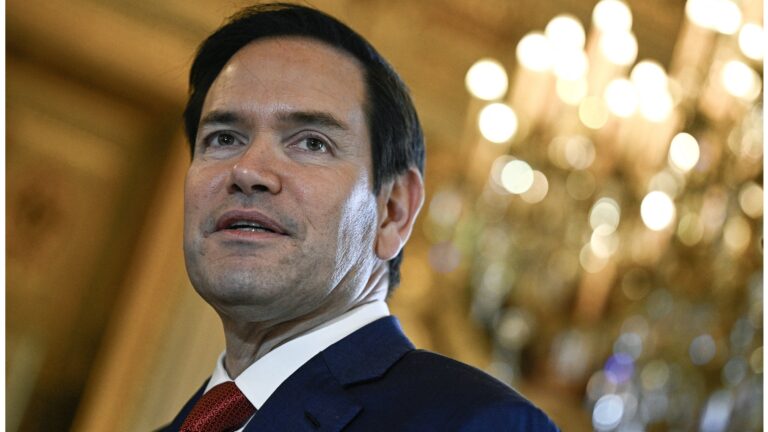This article was published in Vol. 4 No. 3 of our print edition.
The United States did not play a role of any significance in Europe during the ‘long 19th century’. Washington, even had it wanted to, simply did not possess the capabilities to influence the political and economic events there and, in the spirit of the unilateral Monroe Doctrine and John Quincy Adams’s oft-cited principle that the US ‘goes not abroad in search of monsters to destroy’,1 was staying away from great power politics. The turning point came with the Spanish–American War of 1898, and the subsequent extension of American interests in both the Atlantic and Pacific regions.
Although the United States had become the largest economy by the turn of the century, her clout in international affairs was inferior to that of the major European countries of the time. The ‘Great War’ brought drastic changes in the relationship between the US on the one hand and Great Britain and France on the other. The latter had been running out of ready cash by late October 1915. President Woodrow Wilson strongly believed that trade was absolutely necessary for sustaining economic growth, so he was unwilling to impose an embargo on the belligerents.
In reality, given the imbalance of strength between the combined British and French navies and that of Germany, this policy ultimately favoured the Entente powers. Then, in October 1915, the president authorized loans to the belligerents, and the result was again lopsided: while the British and French had received American loans to the tune of some $2.5 billion by April 1917, when the US entered the war, Germany had only received a meagre $27 million. At the time of the armistice in November 1918, total US loans to the major Allied countries (Great Britain, France, and Italy) stood at some $7 billion. Moreover, the volume of private loans and credit to Great Britain and France exceeded that of the US Treasury loans; they were floated predominantly by J. P. Morgan & Co. Altogether, the US had acquired the status of the major creditor nation by the end of the war; the financial centre of the world was shifting from the City of London to Wall Street in New York City. Although successive American administrations in the 1920s and the better part of the 1930s did not assume any meaningful role in the political and diplomatic affairs of Europe, the economic presence of American companies in multiple fields became more and more pronounced during the interwar years.
The Second World War: ‘And the Winner Is’… the United States
Woodrow Wilson was also instrumental in reinforcing the idea of American exceptionalism in international relations. He blamed the outbreak of the war on traditional balance-of-power politics and offered an alternative based on morality. His liberal internationalism wished to make the world ‘safe for democracy’. He occupied the moral high ground on the world stage, implying that the contemporary great powers were immoral and, as such, unfit to lead. The message was clear: it was exclusively the United States that had been endowed with the moral right to set an example and, ultimately, lead the
world towards a utopian future. In the words of John Winthrop: ‘For we must consider that we shall be as a city upon a hill. The eyes of all people are upon us.’2 More bluntly, then, the European powers (and all other nations) could not be trusted to manage world affairs.
Franklin D. Roosevelt inherited Wilson’s scepticism regarding the Europeans’ ability to handle their own affairs. The American grand strategy, whether by design or not, resulted in Great Britain and France being reduced, for all intents and purposes, to the status of regional powers. In other words, the grand strategy of the United States in Europe was counter-hegemonic. However, the post-First World War strategy of offshore balancing was now out of question because of the emergence of the Soviet Union as a global great power. Consequently, the United States had to take over responsibility for guaranteeing the security of Western Europe at the end of the war, as London and Paris would have been unable withstand a potential Soviet attack. The US either consciously or unconsciously created a situation in which it was to become a European ‘empire by invitation’.3
Great Britain and France were victims of the application of the idea that one should ‘never let a good crisis go to waste’, especially in terms of financial necessity. The so-called ‘cash-and-carry’ provision of the fourth Neutrality Act, signed into law by Franklin D. Roosevelt on 4 November 1939, made it possible for the belligerents to make purchases from the United States—provided they were paying in cash. The underlying idea was to assist the British and French, though the majority of Americans, including cabinet members, were convinced that London enjoyed inexhaustible resources thanks to its vast empire. At the same time, a number of people in London did believe that the United States was consciously trying to weaken Great Britain by draining its currency reserves. Winston Churchill gave voice to this widespread sentiment when he remarked that ‘we are not only to be skinned but flayed to the bone’ by the Americans.4
‘The Russia–Ukraine War provided an opportunity for Washington to further prevent Europe from becoming a peer competitor of the United States’
Nevertheless, the most important American tool of economic warfare was the lend-lease programme, which was first made public in one of President Roosevelt’s famous fireside chats on 17 December 1940. The lend-lease agreement was originally implemented between the US and Great Britain; afterwards 35 other countries became beneficiaries of the bill, which was introduced into the House of Representatives under the symbolic H. R. 1776 number on 11 January 1941. The benefits of the programme for the United Nations fighting the Axis powers were beyond dispute: Great Britain received some $31 billion worth of deliveries (it must be remembered, however, that within the framework of the so-called reverse lend lease the British supplied some $7 billion worth of goods and services to the Americans). However, there are historians who believe that ‘the most unsordid act in history’5 (Winston Churchill) was not selfless in all respects. One of the side effects of lend-lease was the almost total destruction of British exports. Then, in 1946, London was forced to apply for a loan from the United States. The $3.75 billion loan helped the British economy survive a rather difficult post-war period; Great Britain started repayments in 1950, and the last instalment ($83 million) was transferred to the US Treasury in 2006.
The Shaping of the Post-War (Western) European Order
Despite the fact that Great Britain was making extra efforts to fight the Axis powers on three continents and on sea, from the Atlantic through the Mediterranean to the Indian Ocean, it was clear during the final years of the Second World War that the Soviet Union and the United States were carrying the main burden of the fighting. The British strategic and even tactical ideas and goals were often pushed aside by Washington and Moscow—indeed, sometimes they even acted in tandem to kill British proposals. It became an open secret that Europe’s future, including its security, would be decided by the two non-European great powers—for the first time in the history of the continent. In fact, the ‘pecking order’ that had prevailed over previous centuries or even millennia was reversed: while it was the European powers (Great Britain, France, Germany, and even such smaller states as the Netherlands, Portugal, and Belgium) that had dominated the world stage, and had dictated policy across the greater part of the globe, now Europe was becoming a policy taker almost overnight. Its very survival depended on the policies of the US and the Soviet Union during the Cold War; in the most important existential matters, those of nuclear arms limitations and controls, Washington and Moscow negotiated over the heads of the Europeans.
Attempts on the part of Europeans to take decisions concerning nuclear weapons were rather ineffectual: the French force de frappe did not figure prominently in the nuclear talks between the two superpowers, and likewise the attempts by Charles de Gaulle to create an independent ‘(Western) European’ policy was doomed from the beginning. President Emmanuel Macron’s ‘strategic autonomy’ for Europe is also likely to remain wishful thinking. One may suspect that the abrupt creation of AUKUS (Australia, the UK, and the US) cooperation in supplying nuclear powered submarines to Canberra by excluding the French may have been a warning shot across France’s bow that flirting with strategic independence from the United States entails a (high) price. US administrations have been paying lip service to a more robust European contribution to defence and security, especially when it comes to the Russia–Ukraine War, but they have always emphasized that it should be realized within NATO, and have warned repeatedly against any ‘decoupling’ and/or ‘duplication’ of capabilities.6 The ongoing burden-sharing debate is boiling down to greater financial contributions and host-nation support on the part of Europe, or, at most, developing so-called niche capabilities which are subordinated to American needs and integrated into NATO. In reality, therefore, they are only to complement American power, not challenge it.
After the First World War, the Wilson administration, and subsequent interwar administrations, refused to offer security guarantees to the Europeans. Post-Second World War power relations were radically different. There emerged a strong and aggressive power in the east of the continent, and Joseph Stalin revived the idea as early as February 1946 of an ultimate clash, a ‘Third World War’ between the communist countries and the West. It was obvious that the British and French would not be able to offer any meaningful resistance to a Soviet attack. Therefore, instead of the hasty demobilization that followed the end of the First World War, the Truman administration sought ways to counter potential Soviet threats. Vital US national security concerns demanded that Washington should prolong its military presence in Europe. First, it was—and is—a truism that one of the most serious threats to America’s national security would be the domination of the Eurasian landmass by one foreign power, or an alliance or coalition of foreign powers. In other words, US grand strategy has been counter-hegemonic, by either offshore balancing, or onshore balancing, or both. (NATO falls into the latter category.)7 Second, Europe was—and is—seen as the first line of defence across the Atlantic. This notion had more relevance at a time when ICBMs, long-range bombers, and nuclear submarines were less of a factor, but indirectly it still plays a significant role in US strategic planning: losing its European allies might strip the United States of some of its most loyal friends and an important power base in the Atlantic region. These basic considerations explain to some degree why the United States was—and is—willing to absorb an asymmetrical (financial) burden in maintaining the Atlantic alliance. This ‘largesse’ has an extremely important strategic and political aspect as well: NATO is the only institution that ‘officially’ makes the US a European power.
Washington was, in effect, pursuing a dual containment policy during the Cold War, and certain elements of this strategy have been kept in place in the twenty-first century as well. Informal and indirect US influence is enormous in the various organs of the European Union, in financial affairs, as well as in such ‘soft power’ areas as culture in a broad sense. These considerations explain why Washington has raised the question of burden sharing so infrequently and, in general, so half-heartedly since 1951, when the question first emerged.8 It is a widely held view that the United States never intended to make NATO a truly equal partnership.9 An underlying overall American goal seems to be to make the United States ‘indispensable’ to Europe and therefore keep the continent in a dependent status, while at the same time retaining the right and ability to act unilaterally—as seen with the so-called Bush Doctrine after 11 September 2001 or the decision to withdraw from Afghanistan in mid-summer of 2021.
The other side of the coin is that Europe has become accustomed to enjoying a relatively ‘free lunch’, though the European contribution to collective security through host-nation support, infrastructure development, intelligence activities, and the like is usually higher than the Americans are willing to admit. European efforts, including, for instance, PESCO (Permanent Structured Cooperative Defence Initiative), the European Defence Fund, Eurocorps, and the like are not really significant enough to create a strong, independent European arm of NATO or anything outside the structures of the Atlantic alliance. Moreover, it should not be ignored either that Germany is still under a sort of military occupation,10 though the American military presence there is also ‘by invitation’. It is especially the French who have been quite uneasy with the prospect of a potentially rearmed Germany because removing the American security umbrella from Germany might generate a radical change in Berlin’s security and defence policies. Obviously, German rearmament would be a response to a potential Russian threat first and foremost, but a militarily strong Germany would not be especially welcome in Western Europe. In short, Lord Ismay’s famous dictum is as valid as when it was pronounced: NATO is essential for keeping ‘the US in, the Russians out, and the Germans down’. (Christopher Layne claims that a more accurate definition should be as follows: ‘keeping America in—and on top—so that Germany is kept down.’11)
After the collapse of the communist regimes in Central and Eastern Europe, and the dissolution of the Soviet Union, NATO’s future hung in the balance to some extent, as the alliance was originally conceived as a territorial defence organization in the North Atlantic area. The George H. W. Bush and Bill Clinton administrations sought a new purpose for the Alliance (and to justify the prolongation of the US military presence in Europe), and finally came up with the ‘out-of-area’ concept. Since the mid-1990s, this new strategy has been repeatedly used by successive administrations, except for Donald J. Trump’s, to support American efforts to export democracy—by force, if necessary. The project split the Europeans, and Washington found new committed supporters among the new NATO members; playing ‘New Europe’ against ‘Old Europe’12 gave Washington another tool to strengthen its hold on Europe and, in a broader sense, to weaken potential European unity and attempts at pursuing policies antithetical to US interests anywhere in the world.
The strategic dilemma for the United States is whether to support or obstruct the creation of a federal Europe. On the one hand, given the strong challenges to her global power, particularly by China and Russia, it needs a strong Europe to stand by the United States in the global contest. On the other hand, it would not serve US interests to face yet another peer rival in political and security matters (besides having in Europe a competitor in economic power and trade). During the run up to the Brexit referendum, the Trump campaign was unambiguously on the side of the Brexiteers: the departure from the EU of the foremost European military power besides the French, and the world’s sixth largest economy, played into the hands of those in the United States who wished to see a weaker and, therefore, more subservient Europe, i.e. a junior partner. The Elysée Treaty in January 1963 perfectly fit into this pattern: the original text was watered down by a (later) amendment to the preamble that the UK, as a kind of ‘Trojan horse’ for the United States, should be allowed to join the European Community (EC).
Solidifying US Control Over Europe: The Twenty-First Century
The Russia–Ukraine War provided an opportunity for Washington to further prevent Europe from becoming a peer competitor of the United States any time soon. The conflict offered a unique chance for the US to detach Europe in general, and Germany in particular, from Russia. History has demonstrated that a too intimate relationship between the two countries may have rather dire consequences: that is, Germany and Russia might together establish hegemony over the rest of Europe.13
The factors, among others, that could potentially enable Germany to pursue an independent foreign policy included its strong economic basis and global export position. Both relied, to a large extent, on relatively cheap energy, the bulk of which came from the Soviet Union, and after 1991 from Russia. The construction of a gas pipeline between Germany and the USSR was vehemently opposed by the United States: the Reagan administration imposed sanctions on companies which were involved in the project in the 1980s. The American approach could at that time be explained by Cold War exigencies, though one may suspect that the perennial American fear from a strong Eurasian power or alliance was also behind the Reagan administration’s policies.
History repeated itself to some extent in the 2010s and 2020s, when Washington protested equally vehemently against the construction of Nordstream 2; in fact, this ‘vehemence’ most likely took a stronger form than mere verbal warnings. In principle, and in practice, the incident—the blowing up of the pipeline (the perpetrators have not yet been identified unequivocally)—amounted to a violation of German sovereignty. Nevertheless, the government in Berlin seems to be resigned to the fact that decisions about Germany’s sovereignty ultimately lie elsewhere.
The weakening of Europe as a potential peer competitor by detaching it from Russia also has some downsides for the United States. Russia has been dependent on European energy and raw material markets, and relied on importing predominantly manufactured items and technology from Europe. This interdependence prompted Moscow to cooperate with the EU in diverse areas, and made it more sensitive to European interests in Eastern Europe. Now, being cut from Europe through the various sanctions, it has been forced to look for export markets and alternative import resources elsewhere. Thus, in short, Europe’s clout has become weaker vis-à-vis Russia and, consequently, it has lost some of its usefulness to the United States in this process. Conversely, Europe had a stronger negotiating position with the United States, especially in economic and trade matters, when it was able to draw on Russian energy and minerals. The net result is that Europe is arguably the loser in the US–Europe–Russia strategic triangle.
At the same time, there are signs that Europe is no longer at the centre of American strategy, and this fact, paradoxically, may offer opportunities for Europe to loosen its dependence on the United States. With the collapse of the Soviet Union, Europe ceased to be the main front line, and the challenges to vital US interests began to emerge elsewhere on the globe, particularly in the Pacific region and the wider Middle East. Europe, lacking, with the exception of the British and French, any power projection capabilities, was downgraded to such auxiliary roles as, for instance, peacekeeping in the Balkans (after the United States forced uneasy settlements on the Serbs, Croats, and Bosnians in Bosnia-Herzegovina, and the Serbs and Kosovars in Kosovo), or managing post-conflict reconstruction and humanitarian aid in Afghanistan and Iraq.
‘Europe is…now being boxed into a relatively inferior position, in large part because of the policies of the United States, which needs a junior partner, not a peer, in its global endeavours’
Barack Obama—called ‘the first Pacific President’ by Kenneth Lieberthal—entered the White House in 2009, and his administration stressed the shift of America’s core interests towards the Indo-Pacific area.14 The obvious target of American attention in the region is, first and foremost, the People’s Republic of China (PRC), and Washington has endeavoured to solicit the assistance of its European allies in an attempt to slow Beijing’s rise as a genuine peer power. One part of this strategy is to discourage the Europeans from establishing too intimate economic and trade relations with the PRC, even at their own expense (‘de-risking’ in more polite terms). The Americans have repeatedly issued dire warnings about the consequences of joining the Chinese Belt and Road Initiative (BRI), adopting Chinese 5G technology, or using Huawei products. Quite a number of European countries and corporations have been unable, or unwilling, to resist this American pressure, and have foregone financially lucrative business deals in order to satisfy Washington.
Arguably, the most manifest expression of the unequal, asymmetrical US–EU relationship nowadays is the handling of economic and trade issues in response to the Russia–Ukraine War and the emergence of China as a global power. Washington’s energy policy stands out as the best example of how the Americans are doing their best to make Europe more dependent on American supplies in this strategic area. In principle, helping Europe become less dependent on Russian energy is in itself not a bad idea. The notion that Europe should be supplied with energy from within the framework of the Atlantic community is also welcome. However, it will increase Europe’s dependence on the United States: Europe’s energy security will be dependent on the United States in the future to a larger degree that it has been in recent decades.
One of the services provided by the United States to her allies was guarding the so-called global commons, including the high seas and such choke points of energy supply as the Persian Gulf or the Strait of Malacca. Europe’s energy security stood on two legs: Russian imports and supplies from the Middle East, Africa, and Latin America. The latter supply routes were controlled by the United States. Now both major sources of energy in Europe are controlled by Washington. The strategic implications are far-reaching: the ‘energy weapon’ can be deployed any time in the event of a major dispute, whether on political, economic, or trade issues, between the two sides of the Atlantic. Trade wars are one of the major weapons of the United States, and were employed against Europe on a smaller scale in the past, but energy dependency gives another dimension to the asymmetrical dependence of Europe on the United States. The ‘energy weapon’ is actually operating even now, albeit in a somewhat indirect way. ‘The overall competitiveness handicap of the European Union vis-à-vis the United States is actually growing on account of the ever higher energy costs. The price of gas overseas was about one-sixth of that in the EU, and a three-four times difference can be expected in the long run.’15
Furthermore, the somewhat mislabeled omnibus Inflation Reduction Act includes, among other provisions, the stipulation that the assembly of electronic automobiles should be carried out in North America if manufacturers wish to avail themselves of tax deductions. Fifty per cent of the components of batteries used in the United States should also be manufactured in America, with some exceptions. The provisions hit German carmakers especially hard, and the weakening of the German economy is bound to have a ripple effect all over Europe, especially in Central and Eastern Europe. The United States is also likely to take advantage of the new opportunities in Europe using different methods to take control of leading companies, or attracting them to move to America.16
Aside from the manufacturing industries, the United States and the EU have been waging an ongoing struggle over agricultural subsidies and genetically modified organisms (GMOs). US penetration into Ukrainian agribusiness may have serious consequences for European producers. According to the Oakland Institute report, ‘Around 4.3 million hectares are under large-scale agriculture, with the bulk of it, over three million hectares, in the hands of just a dozen large agribusiness firms’.17 The report identifies many prominent investors, including the Vanguard Group, Kopernik Global Investors, BNP Asset Management Holding, the Goldman Sachs-owned NN Investment Partners Holdings, and Norges Bank Investment Management, which manages Norway’s sovereign wealth fund. A number of large US pension funds, foundations, and university endowments are also invested in Ukrainian land through NCH Capital—a US-based private equity fund, which is the fifth largest landholder in the country.18 As for the ‘university endowments’, the report identifies the Harvard University and Wellesley College endowments, and when it comes to NCH Capital, out of the top 18 investors, 15 are Americans, including the Lockheed Martin Pension Trust and the General Electric Pension Fund, with obvious connections to the defence sector.19 What is relevant from our point of view is that if Ukraine is admitted into the EU, or is given a special associate status within the EU, US-based companies may compete more aggressively with the current EU agricultural producers and, indirectly, may strengthen the US bargaining positions in this area in disputes with the EU. It is alleged that up to 70 per cent of the food sector in Ukraine is controlled by foreigners, especially Americans. One of the losers in this scenario may be France, which is always suspected by the Americans of trying to loosen its dependence on the US (witness the ‘strategic autonomy’ idea), and is one of the ‘twin engines’ of the European economy (besides Germany). Finally, the dozen or so economic sanctions imposed on Russia are asymmetrically affecting the US and EU economies. Russia’s share of EU trade fell from some 7 per cent in January 2021 to below 2 per cent in September 2023, while Russia’s share in US trade was as low as 0.2 per cent (falling from some 0.3 per cent in 2021).20
Conclusion
Europe was subordinated to the US after 1945: NATO and other multilateral institutions in the Atlantic Community served as ‘fig leaves’ for the asymmetrical relationship.21 The military associations, like all such organization, are first and foremost about raw power; in the final analysis, NATO is not so different from them. As Zbigniew Brzezinski put it: ‘Europe is America’s geopolitical beachhead on the Eurasian continent.’22 The Americans, by extending their idea of ‘exceptionalism’, are trying to involve Europe in their global power politics, and Europe, with some exceptions, such as the opposition of the Germans and French to the Iraq War in 2003, have rather slavishly followed the US lead, even if its own interests dictate otherwise. A classic case is the question of democracy export, a blatant example of the American ‘one size fits all’ approach worldwide.
The gradual diminishing of Europe’s importance in the eyes of the successive US administrations in the twenty-first century has been arrested by Russia’s aggression against Ukraine, and weakened the ‘pivot’ or ‘rebalance’ to Asia for the time being: emergencies have cropped up elsewhere.23 As Joseph Stalin may be said to have been one of the ‘founding fathers’ of NATO, so may Vladimir Putin be seen in a similar role with regard to the revival of NATO, and closer US–EU cooperation. The Russia–Ukraine War, however, seems also to be reinforcing US influence in Europe and over European decision-making. In the final analysis, it is Washington that has been making the vital decisions in this conflict; Brussels merely plays second fiddle—if even that. As the British government ‘sexed up’ the Iraqi threat in 2002, so Washington seems to be doing likewise with the Russian threat to Europe. Doomsday scenarios are floated about the consequences of a Russian victory in the Russia–Ukraine War. According to them, the Russian war machine would not stop in Kyiv, but would carry on as far as the Atlantic Ocean. Given the various problems of the Russian military against a weaker enemy, as well as Russia’s economic potential (its GDP is roughly the same size as those of Italy or Spain), it is rather unlikely that Putin’s Russia is planning to take on NATO, including the United States. Moreover, the Russian leadership is likely to be more sensible than to commit the bulk of its military capabilities to a confrontation with Europe/NATO, and leaving the country vulnerable to a challenge from the east.
The global power game is being played by the United States, China, and Russia. Europe is what the map cruelly shows: a rather small peninsula on the Eurasian continent, which was punching above its weight for centuries, but is now being boxed into a relatively inferior position, in large part because of the policies of the United States, which needs a junior partner, not a peer, in its global endeavours.
NOTES
1 John Quincy Adams, ‘Speech to the House of Representatives on Foreign Policy’, 4 July 1821, https://loveman.sdsu.edu/docs/1821secofstateJQAdmas.pdf, accessed 12 December 2023.
2 John Winthrop, ‘A Model of Christian Charity’ in Edmund Clarence Stedman, and Ellen Mackay Hutchinson, eds, A Library of American Literature: Early Colonial Literature, 1607–1675 (New York: 1892), 304–307, www.americanyawp.com/reader/colliding-cultures/john-winthrop-dreams-of-a-city-on-a-hill-1630/, accessed 23 January 2024.
3 Geir Lundestad, ‘“Empire by Invitation” in the American Century’, Diplomatic History, 23/2 (Spring 1999), 189–217.
4 Kathleen Burk, Old World New World. The Story of Britain and America (Little Brown, 2007), 94.
5 Office of the Historian, ‘Lend-Lease and Military Aid to the Allies in the Early Years of World War II’, https://history.state.gov/milestones/1937-1945/lend- lease, accessed 23 January 2024.
6 For more on this, see András Bíró, ‘Független Európa. Az európai stratégiai autonómia lehetőségei’ (Independent Europe: The Possibilities of European Strategic Autonomy), Kommentár, 3 (2023), 53–61.
7 Christopher Layne, ‘America as European Hegemon’, The National Interest, 72 (Summer 2003), 17–29, www.thenationalinterest.org/article/america-an-european-hegemon-864.
8 See more on this issue in Max Bergman, ‘Europe on Its Own: Why the United States Should Want a Better-Armed EU’, Foreign Affairs (22 August 22, 2022), www.foreignaffairs.com/europe/europe-its-own, accessed 23 November 2023.
9 Claire Berlinski, ‘Europe’s Dependence on the US Was All Part of the Plan’, Politico (16 July 2018). www.politico.eu/article/europe-dependence-on-the-us-was-all-part-of-the-plan-donald-trump-nato/, accessed 10 December 2023.
10 Zbigniew Brzezinski, A nagy sakktábla (The Great Chess Board) (Antall József Tudásközpont, 2017), 96. 11 Layne, ‘America as European Hegemon’.
12 Mark Baker, ‘Rumsfeld’s “Old” and “New” Europe Touches on Uneasy Divide’, Radio Free Europe (23 January 2003), www.rferl.org/a/1102012.html, accessed 10 January 2024.
13 Brzezinski, A nagy sakktábla, 107.
14 See, among others, Hillary Clinton, ‘America’s Pacific Century’, Foreign Policy (11 October 2011), https://foreignpolicy.com/2011/10/11/americas-pacific-century/, accessed 16 November 2023; see also Kenneth Lieberthal, ‘The American Pivot to Asia’, Foreign Policy (21 December 2011), https://foreignpolicy.com/2011/12/21/the-american-pivot-to-asia/.
15 Interview with Martin Santo, Magyar Nemzet (11 March 2023), 13.
16 Interview with Olivér Hortay, Magyar Nemzet (8 March 2023), 14.
17 ‘War and Theft: The Takeover of Ukraine’s Agricultural Land’, Oakland Institute, 4, www.oaklandinstitute.org/war-theft-takeover-ukraine-agricultural-land, accessed 11 December 2023.
18 ‘War and Theft: The Takeover of Ukraine’s Agricultural Land’, 4.
19 ‘War and Theft: The Takeover of Ukraine’s Agricultural Land’, 12.
20 The data are taken from www.ec.europe.eu/eurostat/statistics-explained/index.php?oldid=558089 and www.ustr.gov/countries-regions/europe-middle-east/russia-and-eurasia/russia, accessed 10 December 2023.
21 Klaus von Dohnanyi, Nemzeti érdekek (National Interests) (Habsburg Ottó Alapítvány, 2022), 31.
22 Quoted in Dohnanyi, Nemzeti érdekek, 34.
23 Peter Birgbauer, ‘The US Pivot to Asia Was Dead on Arrival’, The Diplomat (31 March 2022), www.thediplomat.com/2022/03/the-us-pivot-to-asia-was-dead-on-arrival/, accessed 22 November 2023.


